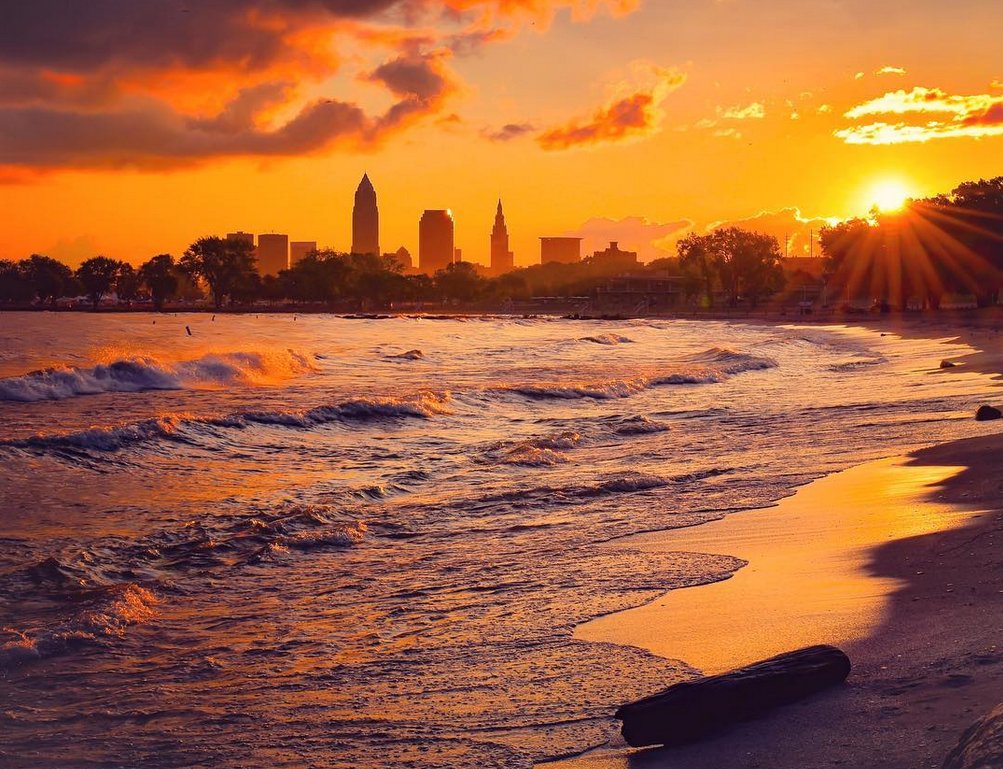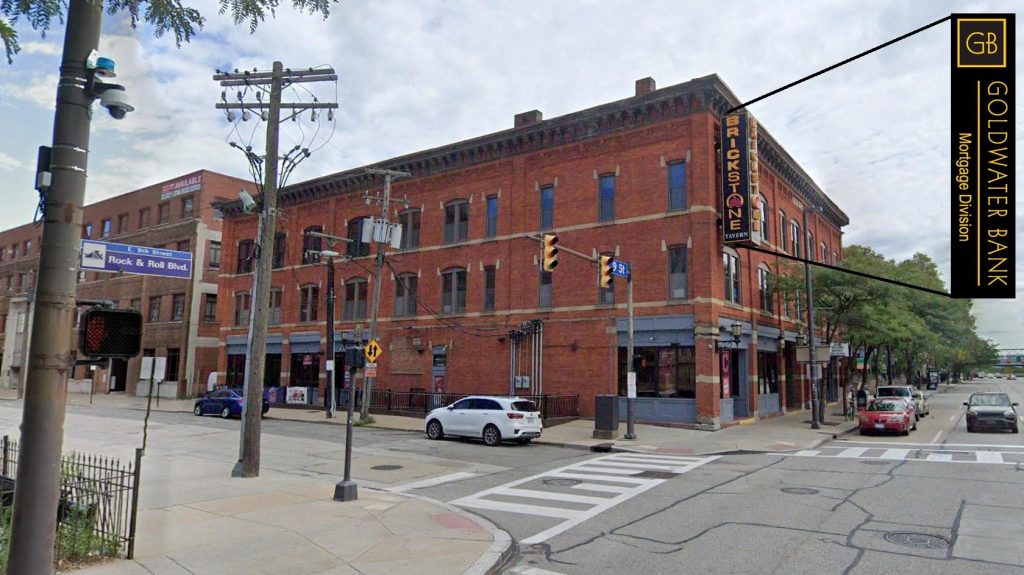By Ken Prendergast
Sometimes the best way to reveal how miserably underserved Ohio is when it comes to local, regional and intercity public transportation is to compare two similar cities in separate states.
Our tale of two cities starts in Warren, OH, 15 miles west of downtown Youngstown. Once a proud manufacturing center, it has been bleeding jobs and residents for several decades. Today it has a population of 43,000 (down from 60,000 in 1970). Warren is set in Trumbull County which has 210,000 residents, 3,100 of whom commute 50 miles each way to jobs in Cleveland, Census data shows.
We don’t have to look far for Warren’s comparison city. Of nearly equal distance from downtown Youngstown to the east is New Castle, PA. It is virtually the eastern mirror of Warren, except that New Castle is smaller and has more hills. And like Warren, it has been bleeding manufacturing jobs and residents. Today, New Castle has a population of 25,000 (down from 40,000 in 1970). It is in Lawrence County, population 90,000, of whom 3,000 commute nearly 50 miles each way to jobs in Pittsburgh, according to Census data.
But the similarities stop when it comes to public transportation.
The reason for the difference is that a state line separates Warren from New Castle. More accurately, the reason for the difference is the sharp contrast in transportation public policies that exist on one side of the state line versus the other.
The New Castle Area Transit Authority has 17 fixed-route bus services, many of which operate every day except Sunday. Their most heavily traveled routes offer buses every 30 minutes. And, they have a popular and growing express bus service to downtown Pittsburgh with 11 daily round trips Monday through Thursday, 13 on Friday and four on Saturdays. The trip takes 1 hour, 25 minutes and the fare is just $3 each way, funded in part by Pittsburgh’s new casino. Sunday service is provided by Greyhound which has two round trips between New Castle and Pittsburgh seven days per week but the round-trip fare costs up to $50
NCATA buses travel directly to Pittsburgh’s new Greyhound station, built two years ago across Liberty Avenue from Amtrak’s Penn Station. So someone from New Castle can easily connect to/from long-distance trains and buses. Local buses east to the universities at Oakland or west to the airport flow through this area, too.
A very different transportation scene exists 15 miles west of downtown Youngstown. So what regular public transportation service does Warren offer?
Nothing. Nada. Zero.
Trumbull County recently scraped together enough funding for a minimal dial-a-ride service so low-income, senior and disabled residents aren’t sentenced to home confinement anymore. If they reserve a bus early enough, citizens can get a ride to the doctor, grocery store and social activities. But the transportation isn’t there on a regular, daily basis to provide more independence, which a scheduled route offers.
That’s a statement about Ohio’s lack of civility, humanity and moral responsibility to its most vulnerable citizens, let alone many travelers who simply don’t want their hands to be chained to the steering wheels of their money-eating, energy-dependent, weather-vulnerable cars. Warren has no transit route to Youngstown or Cleveland. There’s no Greyhound service. There’s nothing. Warren may as well be in the middle of the Mojave Desert for all Ohio is concerned. It’s a similar situation in other small and medium-sized Ohio cities – from Lorain to Lima.
What’s the difference between Ohio and Pennsylvania – Money, of course. Budgets are the ultimate statement of political priorities. In 2010, the Pennsylvania Department of Transportation’s Bureau of Public Transportation spent $400 million on transit. In 2011 it could drop to $250 million due to the commonwealth’s inability to turn Interstate 80 into a tollway. But the state’s goal is to increase public transit operating funds to more than $500 million per year.
In 2010, Ohio spent a mere $10 million on public transportation. Yes, $10 million is not a typo. That’s less than what the state spends to cut the grass along its Interstates. Even at its peak in 2000, the $42 million Ohio spent on public transit is less than what Pittsburgh’s transit system got last year from the Commonwealth of Pennsylvania.
In one of its last acts, the departing Strickland Administration quintupled Ohio transit funding to $50 million for 2011 by tapping federal transportation funds. It’s likely those funds will be diverted to roads by the incoming Kasich Administration – as if 98 percent of transportation tax dollars going to Ohio roads is not enough. If Ohio spent 8.5 percent of its $3 billion transportation budget on transit to at least serve the 8.5 percent of Ohio households without cars, the Buckeye State would quintuple transit funding again, this time to $250 million per year.
Of course, all of these cities – Cleveland, Warren, Youngstown, New Castle, Pittsburgh – could be connected again using some of the region’s many parallel rail corridors. Federally compliant environmental planning for Cleveland – Akron – Youngstown – Pittsburgh (CYP) TechBelt rail infrastructure investments was due to start in 2011 to create more efficient freight and commuter rail accessibility and support TechBelt Initiative job-creation goals. The fate of that planning under Kasich isn’t known. This region and many others need transportation now.
Back in New Castle, citizens can take NCATA bus Route 91 on US 422 between downtown New Castle and the Ohio state line. Sadly, no Western Reserve Regional Transit Authority bus route comes from Youngstown to connect with it. The closest is WRTA’s Route 31 on US 422, which turns back just three miles shy of the state line. Three miles. So if someone in Youngstown (where 18 percent of the city’s households have no car) wants to visit family or friends in New Castle, they’d have to take a Greyhound bus to downtown Pittsburgh and double-back to New Castle – a 115-mile trip because Ohio won’t pay for three miles of bus service.
Sadly, that’s still more convenient than the transportation service to Warren and other Ohio cities which have nothing.
END





Excellent post and analysis. Thanks for sharing. I've seen the point about the interstate mowing budget before. Is that just flowery hyperbole to make a point, or do we actually know what the budget is for highway mowing in Ohio?
Thanks, and thank you for your response. I have a pretty solid baseline figure that the cost of mowing along Interstate highways (not including other divided non-Interstate highways) is about $16.8 million ($16,828,826) per year. I learned of this data two years ago….
The City of Akron and ODOT District 4 joined together in a pilot program in 2008 to end the practice of lawn-mowing along the 25 miles of expressways in the city. Instead, the city and ODOT planted hearty shrubs, perennials, trees and ground cover to replace high-maintenance fescue which includes lawn, turf and pasture grass types.
Lawn-mowing along 25 miles of expressways in Akron cost $267,634 per year or $10,705.36 per route mile, according to the city. The city mowing costs were reimbursed by ODOT. But the pilot program saved labor, materials, fuel, employee benefits, equipment and maintenance costs. The program also improves safety. Lawn-mowing and the use of weed trimmers around guardrails is dangerous work, with laborers working around loud equipment while standing near to lanes of fast-moving traffic and heavy trucks. Furthermore, eliminating the use of lawn-mowers also eliminates another source of carbon emissions. For more details, see http://www.ci.akron.oh.us/News_Releases/2008/0815.htm.
Expanding this program to Interstates statewide could reap substantial savings for ODOT and even wholly fund the annual operating costs of the 3C rail service. Ohio has approximately 1,572 route miles of Interstate highways (http://www.bts.gov/publications/state_transportation_statistics/ohio/pdf/entire.pdf).
The per-route mile lawn-mowing cost data noted earlier suggests the state could save about $16.8 million per year in lawn-mowing expense. A side benefit is that Ohio Interstates will be more visually attractive with the presence of more diverse yet lower-maintenance plantings along them.
This is a great blog and gives info that contradicts some of the misinformation that our new Gov. Kasich and friends have circulated to derail (deliberate pun)high speed rail in Ohio. In today's (Jan.9th) Plain Dealer (Forum section) there are three responses to last Sunday's (Jan.2) Brent Larkins very misinformed column bashing the 3-C corridor.Keep up the good work and help get us into the 21st Century along with neighboring states!